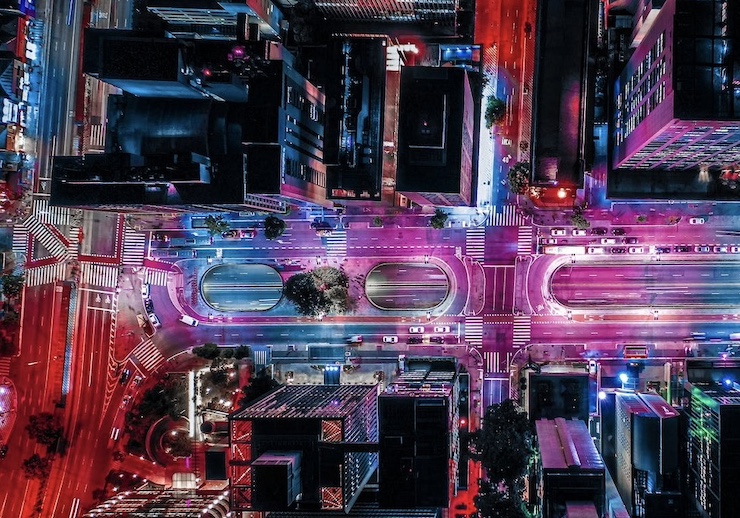
It seems like a simple issue, and at one level, it is. The short answer is: Yes, drones, commercial and recreational, are legally permitted to operate at night. It used to be more complicated. That’s because prior to April 2021, drone fliers needed a special waiver from the FAA to fly at night, legally. “Night” was defined somewhat informally, as the period between 30 minutes after sundown and 30 minutes before sunrise. Back then, concerns about visibility were paramount. In the dark, so many obstacles – from trees to power lines to rooftops – that are sometimes difficult to avoid during daylight hours tend to become ever-present dangers at night. Under the old regs, you had to demonstrate specialized drone flying expertise and FAA waivers were granted on a case-by-case basis for specific project missions and locations. It was extremely cumbersome.
These days, while most drone hobbyists might want to avoid night-time flying altogether, first responders, including law enforcement agencies, have good reason to fly in the dark. One is to find lost or missing persons or to pursue fleeing criminal suspects. Drones equipped with thermal imaging cameras have a remarkable ability to identify persons in the dark based on their heat signature alone. Night-flying drones have recorded numerous successes rescuing persons that might otherwise have died from exposure from the elements during a prolonged search attempt. Night time aerial surveillance can also enhance the security of a property or an installation that might be vulnerable to criminal trespass.
Night time aerial views are also an important possible enhancement of real estate properties that are up for sale. Night time shots can help a well-lit property “come alive” and stand-out from footage of other properties on the market. The same applies to weddings, more and more of which are being conducted at night. Finally, there’s film-making. High aerial shots beyond the reach of cranes may be needed to establish a setting. In all of these cases, a drone is much cheaper and more convenient to use than a helicopter or small aircraft that consumes fuel, requires a trained pilot and leaves a large carbon footprint.
The rules for night-time flying are somewhat different for recreational and commercial flyers. Recreational flyers need only demonstrate that their drone is equipped with anti-collision lights visible from about 3 miles away and that it can flash those lights in time to avoid a collision with another aircraft. Naturally, the same restrictions that apply during daylight hours – for example, flying below 400 feet and receiving formal authorization if flying in controlled airspace – also apply at night, without exception
For commercial flyers, the same rules apply but with one addition: drone operators must also take and pass a FAA Part 107 knowledge test — with 45 items – that requires about two hours of preparation. The test is not that hard to pass on the first try; the test site even identifies your wrong answers and allows you to go back and fix them. Essentially, it’s impossible to fail the test.
Once you’re qualified to fly, there’s still the question of what qualifies as an “anti-collision” light. Most drones come equipped with some kind of navigation lights, which may be white, red or green, or some combination thereof. But anti-collision lights are a special set of lights that meet FAA specs. Typically, the lights are red or white (or both) and must be capable of flashing in a constant strobe or blinking pattern to alert other fliers of your presence while airborne.
Technically, they must be flown not only at night, but also during “twilight,” usually defined as a half hour or hour before the commencement of night-time.
The FAA has a minimum requirement for anti-collision lights: Just one pair is sufficient. Some fliers keep it simple – one pair of flashing white lights; others may use more than one color and more than one pair of lights – which may make sense for larger drones, especially. The lights typically flash at three different speeds, from slow to rapid. It’s up to the flier to determine which setting to use.
The most popular and readily available anti-collision lights are the LumeCube strobe lights, but there are at least two other good options: Firehouse Technologies drone lights and LitraTorch lights. Choice of one option over another is mainly a matter of personal preference but some modules are larger and more expensive than others. They all come with assembly instructions and are easy to attach to your drone, often with a simple Velcro patch, which makes it easy to remove and store when not in use.
|